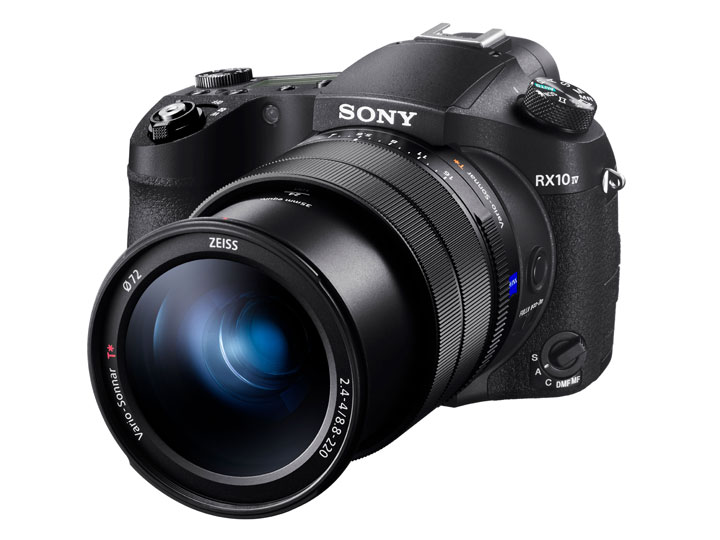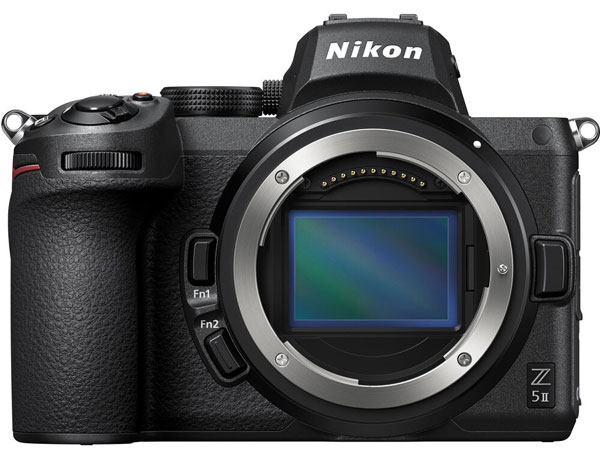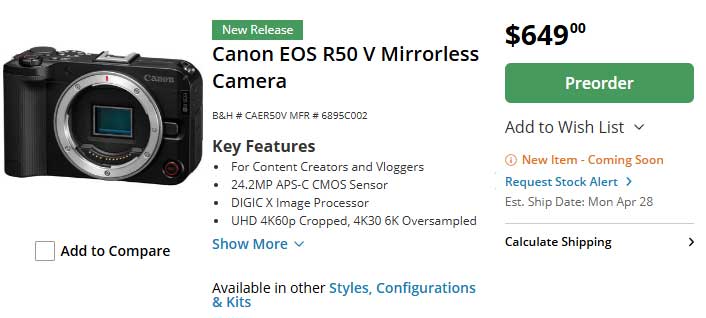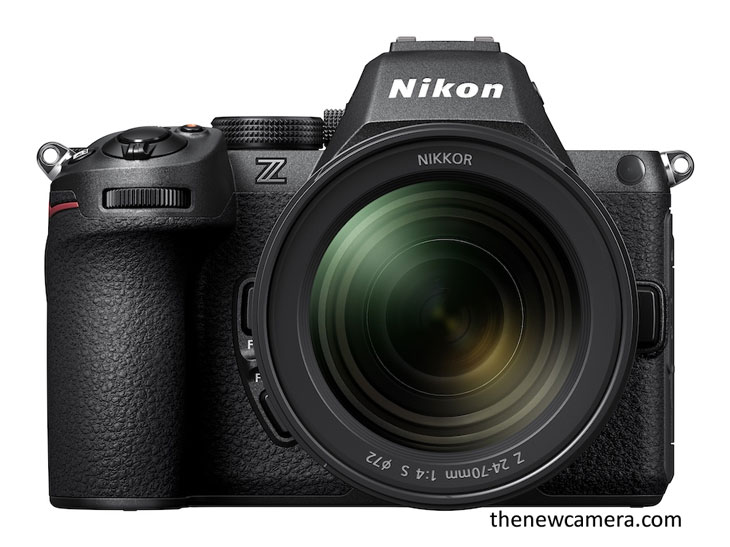
Nikon finally announced the Nikon Z5 II camera. The camera features a major upgrade in the core specification. It now features an updated 24-megapixel full-frame CMOS sensor, paired with the Expeed 7 image processor, that we have already seen in the Nikon Zf camera.
Now, the continuous shooting speed of the Nikon Z5 II can reach up to 14 frames per second, with a mechanical shutter, and the autofocus has been upgraded with an AI AF algorithm ( coming from the Nikon Z8 camera). The camera’s continuous shooting speed can be further pushed up to 30 FPS while shooting with an electronic shutter.
Get the Nikon Z5 II camera from B&H Store | Adorama.com | Amazon.com
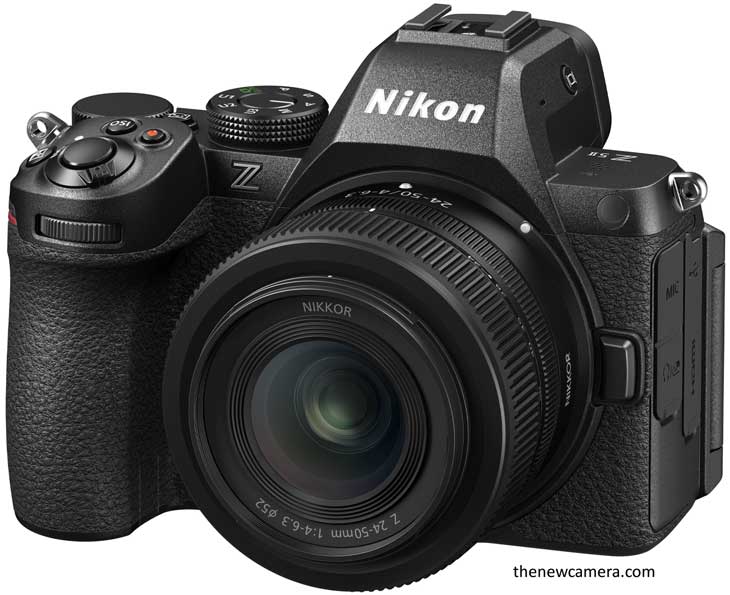
Nikon Z5 II major features
- 24MP BSI full-frame CMOS sensor
- In-body image stabilization, rated up to 7.5EV
- Autofocus subject detection with support for 9 subject types
- 14 fps Raw w/ mechanical shutter
- 30fps JPEG-only mode with pre-release capture
- 3.69M dot 60Hz EVF with 3000-nit peak brightness
- 4K/30 full-width, 60p w/ 1.5x crop
- 10-bit N-Log or N-Raw capture
- Dual UHS-II card slots
- Downloadable color mode presets via Imaging Cloud
The camera features 10-bit internal recording in log, and the frame rate can be boosted up to 4K 60 FPS, but in DX mode. While recording in 4K 30 FPS, there is no crop. The overall autofocus algorithm has also been optimized for video recording. Support for inbuilt 7.5 stops of sensor-shift image stabilization works very well while recording video. At the same time, you also get a vari-angle monitor to properly compose your scene according to exposure.
The Z5II will be available in April and will retail for $1699 – a $300 increase over its predecessor in absolute terms, though a very similar price when considering inflation and its greater ambitions. Kits will also be available with a 24-50mm f/4-6.3 lens for $1999, or with a 24-200mm f/4-6.3 VR for $2499.
Nikon Z5 II Official Press Release
Nikon announces the Nikon Z5II: Let full-frame be the next step in your creative journey
Amplify any Aesthetic & Unleash Your Full Creative Potential with the Most Feature-Packed Camera in its Class
MELVILLE, NY (April 3, 2025) — Today, Nikon announced the new full-frame / FX format Z5II, an entirely new generation of intermediate-level camera that miraculously manages to fit the latest high-end features into a lightweight camera body that will help kickstart any creative spark. The Nikon Z5II is the easiest way to level up a user’s captures with full-frame image quality, incredibly fast and intelligent autofocus (AF), excellent low-light performance, one-touch film-inspired color presets and the brightest viewfinder of any competing camera.1
The new Nikon Z5II uses the same high-power EXPEED 7 image processing engine as Nikon’s highest caliber professional models, the Z8 and Z9. The benefits of this processor are immediately apparent, affording incredible levels of performance and extremely fast AF with subject detection powered by deep learning (AI) technology. This highly accurate, high-speed focus is a massive leap from its predecessor, locking in at approximately one third2 the time. In addition, the new camera now utilizes a highly sensitive back-illuminated (BSI) CMOS sensor for beautiful rendering of textures and details, even in dimly lit situations such as indoors or nighttime landscapes, with minimal noise. The Z5II further fuels your creative drive with a dedicated Picture Control button and innovative tools like Imaging Recipes and Flexible Color Picture Controls, all of which help users create a truly distinctive look with unparalleled creative control of colors.
“The benefits of the Z5II go far beyond its attainable price and small size, offering users the benefits of our most advanced EXPEED 7 processing engine, a proven full-frame sensor along with unexpected pro-level features and performance” said Fumiko Kawabata, Sr. Vice President of Marketing and Planning, Nikon Inc. “This is the camera many people have been waiting for in order to make the move to mirrorless, since nothing comes close to matching the value of features and performance in its class.”
Reliably Fast Focus and Performance
The AF on the Nikon Z5II is remarkably precise and super-fast, effortlessly locking-on and tracking a wide range of moving subjects. From fast-paced portraits or action shots, the system helps you to never miss a crucial moment, even when a subject is backlit. The cutting-edge AF system can detect up to nine types of subjects for stills and video, including people (faces, eyes, heads, and upper bodies), dogs, cats, birds, cars, motorcycles, bicycles, airplanes, and trains. But it’s not just the focus that’s fast—thanks to the next-generation processing power, the Z5II also offers high performance features from pro level Z models, to excel in any shoot.
- 3D-tracking AF mode keeps the target subject in focus even if it moves rapidly or erratically. This allows for subject tracking, even at high burst speeds, for sharp images again and again when photographing sports, animals or other fast-moving subjects.
- The first full-frame mirrorless Nikon camera with AF-A focus mode. In this mode, the camera automatically switches between AF-S and AF-C focus modes in response to subject movement or changes in composition with still shooting. This allows the camera to automatically focus on the subject, with no setting adjustments when photographing. This new feature makes it simple to photograph pets, kids or other subjects whose movements are difficult to predict.
- Fast continuous shooting speeds3 with a maximum frame rate of 14 frames per second in mechanical shutter mode and up to 15 or 30 frames per second (electronic shutter) with full autofocus.
- Pre-Release Capture4 function when shooting in C15 and C30 modes is capable of recording images buffered up to one second before the shutter-release button is fully pressed, capturing the action before a user can react.
Embrace Low Light Like Never Before
There’s no need to be afraid of the dark with the Nikon Z5II. Featuring a powerful combination of the full-frame back-illuminated CMOS sensor and the EXPEED 7 image-processing engine, the Z5II delivers the best low light ability in its class. Images and video are rendered with minimal noise, and incredible AF detection abilities in low light. Whether shooting indoors, twilight cityscapes or the night sky, the Z5II is built to help you capture confidently in nearly any light, preserving details and textures throughout the broad ISO range.
- Class-leading autofocus detection down to -10EV5 delivers accurate, reliable focus in dim and dark conditions—great for concerts, live performances, festivities, available light portraiture, astrophotography and more.
- A broad standard ISO sensitivity range of 100-64,000, expandable to Hi 1.7 (ISO 204,800 equivalent), delivers exceptional low-light capabilities and outstanding image quality with minimal noise. The max ISO is 51,200 for video recording.
- The 5-axis in-camera vibration reduction (VR) system provides superior image stabilization equivalent to a 7.5-stop6 increase in shutter speed at the center and a 6.0-stop increase at the peripheral areas of the frame. This allows users to create with confidence in lower light and get sharper results, even when handheld or at lower shutter speeds.
- Focus-point VR7 tailors stabilization to the area covered by the active AF point, for sharp rendering of the subject, even when it is positioned near the edge of the frame.
- Starlight View Mode makes focus and composition simple in extremely low light, while the Warm Color Display Mode helps preserve night vision when working in complete darkness.
- Extended shutter speeds up to 900 seconds (15 minutes) in manual exposure mode. Perfect for extreme long-exposure nightscapes and star trails.
Engineered to be Used, Made to be Loved
Shooting with the compact and lightweight Z5II is a satisfying and comfortable experience. The electronic viewfinder (EVF) is simply stunning and is 6x brighter than any competing model. At up to 3000 nits brightness, users can easily shoot even in the brightest direct sun with a perfect view of the frame, with real-time exposure information. Additionally, the rear 3.2” Vari-angle LCD touchscreen rotates freely to nearly any angle, giving full freedom of composition. Get down in the street or hold it high above everyone’s heads and still be able to accurately frame the perfect shot. The grip is deep and comfortable to minimize fatigue. Additionally, the Nikon Z5II’s front, back, and top covers are made from magnesium alloy, which delivers exceptional durability and outstanding dust-and drip-resistance.
Feel the Color with Picture Controls
The Nikon Z5II is the latest camera to support one-button access to Picture Controls, plus compatibility with the Nikon Imaging Cloud. The dedicated Picture Control button opens new possibilities for expressive color, with imaginative film-inspired looks that instantly change the color tone and color of a scene. In a single press, the user can see in real-time the effects of up to 31 built-in color presets plus Imaging Recipes downloaded by the user.
Nikon Imaging Cloud connectivity allows users to download a wide variety of free Imaging Recipes by Nikon and created by popular creators, and to apply these recipes when shooting. In addition, the Z5II supports Flexible Color Picture Control, which allows users to create their own unique color styles using Nikon’s free NX Studio software. Flexible Color allows for a wider variety of color and tone adjustments, including hue, brightness and contrast. What’s more, these settings can also be saved as Custom Picture Controls that can be imported to the Z5II for use while shooting.
Powerful Video Features for Hybrid Users
- The Z5II offers an impressive array of video features for content creators:
- Capture immensely vivid and detailed 4K/30 UHD video, with no crop. This gives creatives the ability to shoot in 4K at full-frame, with more wide-angle freedom. For higher frame rates, the camera can also capture up to 4K/60 with a 1.5x crop.
- Flexible in-camera video recording options with 12-bit N-RAW8, 10-bit H.265, and 8-bit H.264. This is the first camera to be able to record N-RAW to an SD card.
- N-Log9 tone modes offer greater flexibility for color grading. This means Z5II users also have access to the free RED LUTs, which were developed in collaboration with RED for users to enjoy cinematic looks.
- Full HD/120p for flexibility to create 5x slow motion videos in 8-bit H.264.
- Hi-Res Zoom10 uses 4K resolution to zoom up to 2X in-camera during Full HD shooting, without any loss of quality. This is useful when using prime lenses to get closer to a subject and add a dynamic look to footage.
- Product Review Mode will seamlessly switch focus between the user and any objects that they hold up to the camera. Users can even customize the size of the active AF area.
- Upgrade streaming while connected via UVC/UAC-compliant USB port, transforming the camera into a high-quality webcam for live streaming.
- The Z5II also includes ports for headphones and microphones.
Additional Features of the Nikon Z5II
- Dual SD card slots
- Bird detection mode makes it easier to detect birds in motion and in flight.
- Equipped with Nikon’s exclusive portrait functions, including Rich Tone Portrait that realizes radiant and beautiful rendering of skin textures, and Skin Softening that smooths the skin while leaving hair, eyes, and other details sharp.
- Capture high-resolution images with Pixel Shift shooting11 to portray stunning depth and rich textures, from architectural details to rocky landscapes and vibrant artwork, creating images at a staggeringly high resolution of up to approx. 96-megapixels (must be processed with free Studio NX software).
Adobe Creative Cloud Promotion
For a limited time, customers who purchase the Nikon Z5II and register their camera will also get 1 year of Lightroom + 1TB of Adobe Creative Cloud storage. For more information and terms of this promotion, please visit www.nikonusa.com.
Price and Availability
The new Nikon Z5II full-frame mirrorless camera will be available in April 2025 for a suggested retail price (SRP) of $1699.95* for the body only. Kit configurations include the NIKKOR Z 24-50mm f/4-6.3 lens for $1999.95* SRP, and the NIKKOR Z 24-200mm f/4-6.3 VR lens for $2499.95* SRP.


